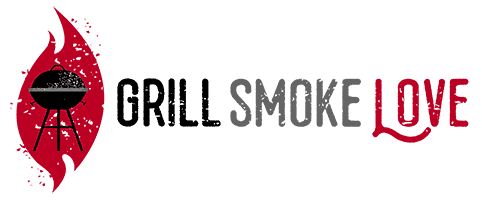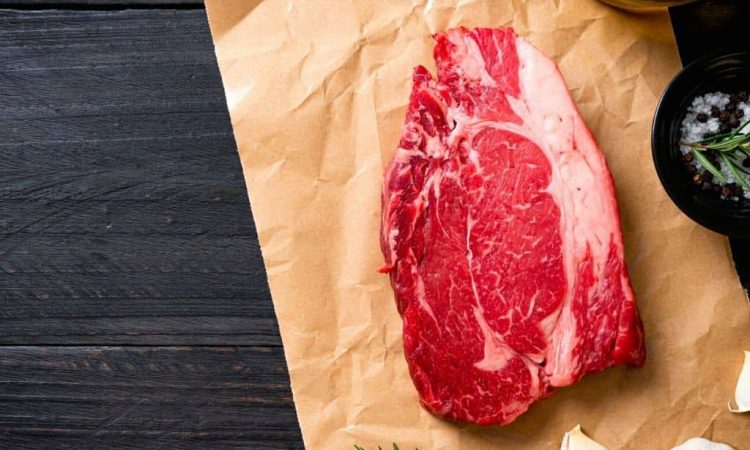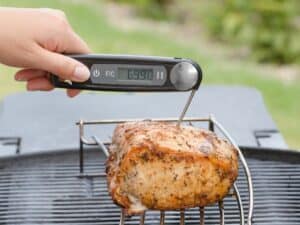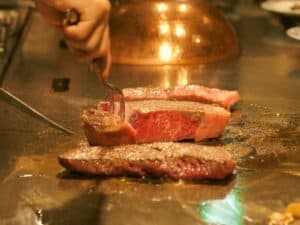Everyone has heard of Angus, whether at the butcher’s counter or on the menu of your favorite steakhouse.
But what does it actually mean? Is an Angus steak worth the extra cost? How can you tell that you’re getting the best beef for your money?
Here’s a detailed look at what Angus beef is and how to get the best cuts from your meat-monger.
What Exactly is Angus Beef?
Angus is a breed of cattle, and there are actually two varieties — Black Angus and Red Angus. The Black Angus can trace its origins back to Scotland. In the mid-nineteenth century, Hugh Watson bred the local indigenous cattle to maximize those with black hides.
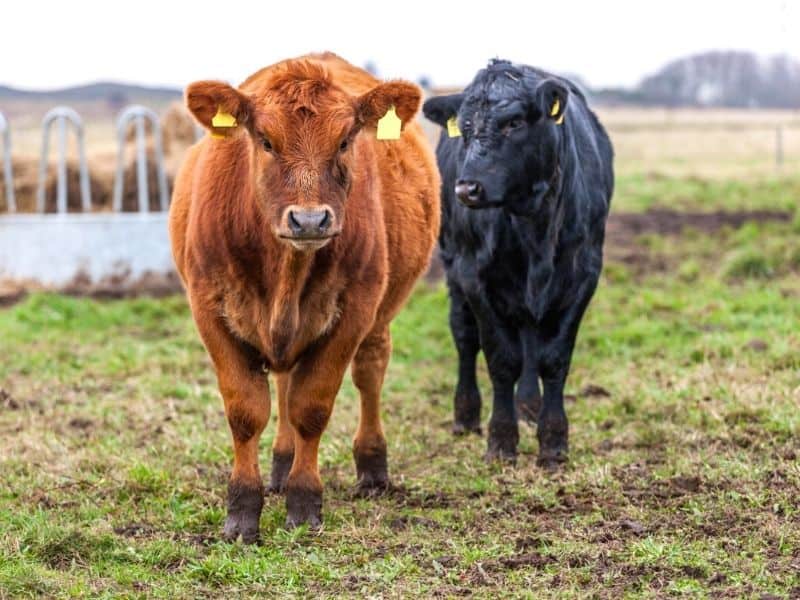
In the 1870s, these Black Angus cattle were imported to the US, and in the 1880s, the American Angus Association was founded. The association only recognizes Black Angus cattle for the purposes of registration and labeling.
The American Angus Association is the largest beef registry association in the world, registering over 300,000 cattle every year.
Fast-forward to today, when the name “Angus” means so much more in American beef culture. Wrapped in a veil of marketing and mystery, the average American probably can’t tell you what makes Angus better than any other beef. And there’s a good reason for the confusion.
Angus has become the rancher’s favorite breed in America, so much of the beef sold in the country is at least partially Angus.
The truth is, that just like Kobe or Wagyu beef, the word has become a marketing gimmick at this point. Since Angus is simply a breed of cattle, anyone can use that name in their labeling. Later in this guide, will explain more about the labeling and how to choose the “real” Angus beef.
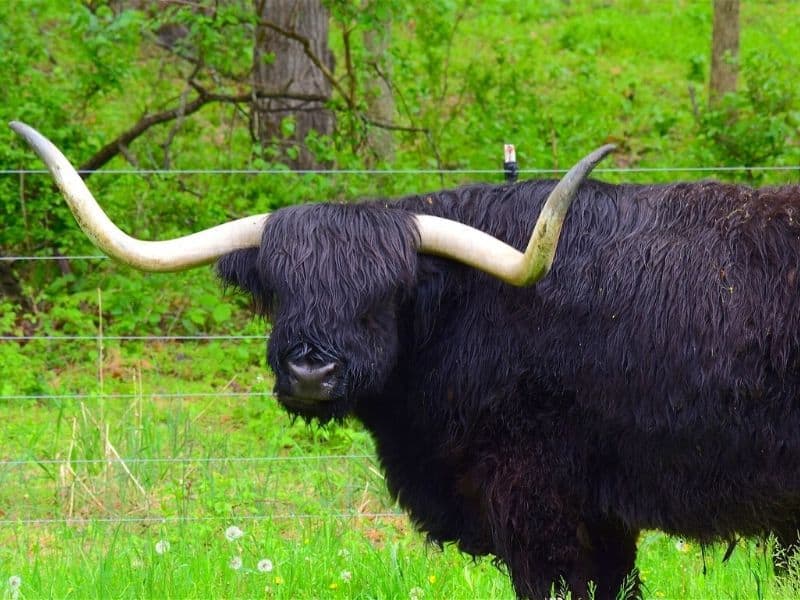
Does Angus Beef Taste Better?
One reason that Angus is so popular is that the meat is generally better marbled than other breeds of cattle. Marbling is the intermuscular fat that is distributed throughout a cut of meat.
The quality of marbling is related to the flavor profiles of the meat. Marbling is a common basis on which beef is rated.
So, how does Angus beef taste?
Well, it’s honestly not that different from any other type of beef. Far more important than simply knowing the breed of cattle is the overall quality of a cut, to begin with.
In other words, there are some low-grade beef cuts out there for sale that are from 100% Black Angus cattle. And on the other hand, there are many examples of extremely well-marbled, gourmet-quality cuts that are not Black Angus at all.
Guide for Buying the Best Angus Cuts
In the US, the Department of Agriculture is responsible for setting the guidelines for food labels and food safety standards.
Breeders must present proof to the USDA that beef is Angus, and this is done by showing that the cattle’s hide is at least 51 percent black. There are no genetic testing requirements or other forms of proof.
That presents a conundrum for the consumer because it is immediately apparent that a lot of meat labeled as Angus is not actually Angus at all or is only partially Angus. Of the 86 USDA-certified beef brands, 63 of them use the word Angus in their name.
The Grade Matters
While the term Angus has little meaning when it comes from most labeling, beef in the US is graded based on its quality. The three best cuts are graded USDA Prime, Choice, or Select.
As you might imagine, USDA Prime labeled beef has the best, most abundant marbling and is produced from young, well-fed cattle. Choice has slightly less marbling but is still a very high-quality cut of beef. Select cuts are leaner and are generally saved for recipes that use a marinade or braising.
These USDA labels have nothing to do with the genetic makeup or the breed of the cattle. They are simply measures of the quality of a cut and the amount of marbling.
Certified Angus Beef
There is one secret that can help you cut through some of the noise at the butcher’s counter. Ranchers can register their cattle with the American Angus Association. If the meat makes the cut, the beef can be labeled with a special “Certified Angus Beef” brand label.
So if you want to buy meat certified by the American Angus Association, look for one of these 3 labels:
Certified Angus Beef: Beef that adheres to the 10 quality standards explained below.

Certified Angus Beef – Prime: The very best Angus Beef that meets 9 more standards compared to the USDA Prime.

Certified Angus Beef – Natural: Cattle that is grown naturally without antibiotics or hormones and fed a vegetarian diet.

To get the association’s label, the beef must pass 10 standards covering everything from marbling, appearance, tenderness, and maturity.
The cattle must be more Angus-bred than the USDA’s 51 percent black hide test to get the label. Even this standard, though, allows for crossbreds and animals that exhibit “Angus influence.”
The 10 science-based standards that are used to evaluate cattle for the “certified” brand include the following:
- A high degree of marbling (quantity)
- Fine or medium marbling texture (quality)
- 10-16 square-inch ribeye area
- Less than 30 months of age
- Less than a 1-inch fat thickness
- Less than 1,050-pound hot carcass weight
- Thick muscling
- No neck humps more than two inches
- Free of capillary rupture
- No dark cutting characteristics
How to Cook Angus
Keeping in mind that Angus is just a type of beef, there are no specific ways that Angus is treated differently when cooking. All the standard advice and recipes for any beef will work great with Angus.
You can certainly find a variety of recipes for Angus on the Certified Angus website. Those recipes, like any other beef dishes you find, will taste great with an Angus cut.
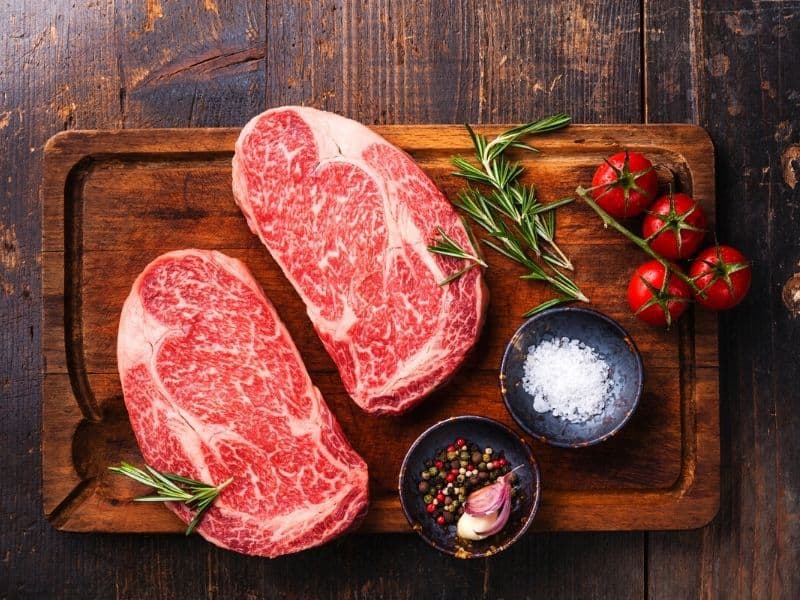
Indeed, when looking to cook any beef dish, the best advice is to buy Certified Angus-branded beef and to cook it properly. This is most important and worth the price when the dish is protein-forward.
High-quality Angus beef is great for steaks, ribs, brisket, and burgers. These are times when the meat is the dish — so buy the good stuff.
Angus cuts are perfect on the grill or in the smoker. Their higher fat content and excellent marbling characteristics mean that they can take high direct heat well, as in grilling.
For smoking, the fat of the marbling absorbs the flavors of the wood smoke more readily. You should have fewer worries about the meat drying out than you do with leaner cuts in both cases.
There are also times when it’s not worth buying the name-brand stuff — although you certainly can do so if you desire.
If you’re braising the beef in a stew or a curry or making heavily seasoned meat pies, chili, or tacos, these are times when you might consider something cheaper and will still get excellent results. After all, many of these recipes originated to use lesser cuts to make tasty, less expensive meals.
Cook It to the Right Doneness
As with all meats, the key to nailing the perfect doneness of Angus cuts is cooking them to the desired internal temperature.
We recommend that you use an instant-read or remote-probe thermometer when cooking. Make sure that it is in the thickest part of the cut and not touching any bone.
You want to cook the beef within five degrees of the target temperature. Once removed from the grill, the meat will continue cooking thanks to carry-over heat. Always rest the meat to allow the cooking process to complete.
The target temperatures for beef are as follows:
- Rare: 120-130 degrees Fahrenheit (49-54°C)
- Medium Rare: 130-140 degrees Fahrenheit (54-60°C)
- Medium: 140-150 degrees Fahrenheit (60-66°C)
- Medium Well: 150-155 degrees Fahrenheit (66-68°C)
- Well Done: 155-160 degrees Fahrenheit (68-72°C)
Note that the USDA recommends cooking all beef to at least 145 degrees Fahrenheit before resting from a food safety standpoint.
Conclusion
Angus is synonymous with quality beef in the US, but not always deservedly so. Unfortunately for consumers, it’s not always easy to discern if a label indicates better quality or if the butcher and rancher is just out to get a little more of your hard-earned money.
When you want the absolute best, you should look for the “Certified Angus” or even “Certified Angus – Prime” label and ignore other references to “Angus” without the brand.
